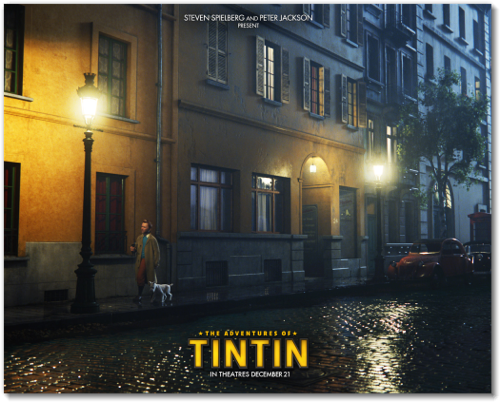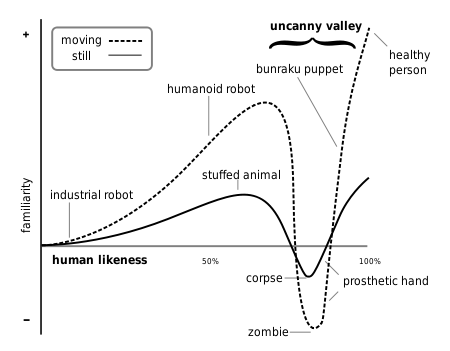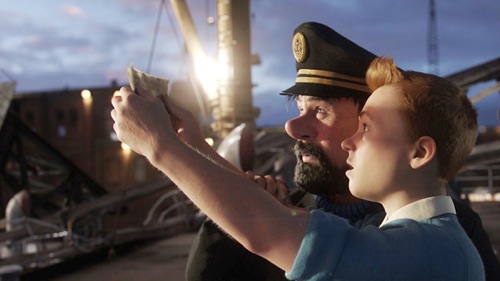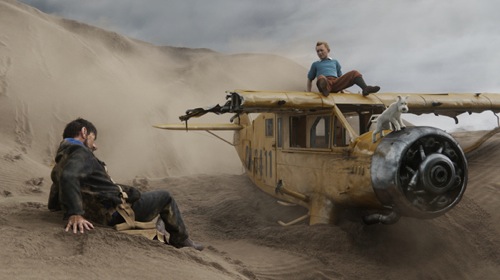Beyond the Uncanny Valley
[Translations: Japanese]
I saw the Tin Tin movie last night, which was super. I think we have passed beyond the uncanny valley into the hyperreal.

What’s the uncanny valley? As we make robots and animations more human-like, we increase our emotional attachment to them, but only up to a point. As they become nearly human, that very tiny remaining difference of inhumanness can creep us out. That’s the Theory of the ” Uncanny Valley , “Which Supposedly Explains why audiences found the animated Humans in the Movie Polar Express, or the baby in the Pixar’s first short Movie, so repulsive. They Were too human to Dismiss, but not human enough to embrace . Computer artists long ago passed the test for 100% realism in artificial beings, such as the Navi in Avatar, or Golum in Lord of the Rings. Now they have passed the test for humans (at least for me) in Tin Tin.

In the first few minutes of the Tin Tin, there is a momentary hesitation when you first see the face of the characters;. A feeling they are just a bit shy of something But that moment passes quickly and thereafter the humans (and animals) seem . totally real Their movements, skin texture, hair, expressions, eyes, everything says they are real -. even though they are only simulations It helps that the environments are also 100% believable, including the elements of water, weather, atmosphere, sand, and city.
In fact, I believe that we have passed beyond the uncanny valley into the plains of hyperreality.

One of the great charms of the Tin Tin movie (besides its solid story, and uplifting sensibility) is the incredible degree of detail, texture, lighting, and drama that infuses every scene. Because the whole movie is synthetic, every scene can be composed perfectly, lit perfectly, arranged perfectly, and captured perfectly. There is a painterly perfection that the original Tin Tin comics had that this movie captures. This means that the stupendous detail found in say TinTin’s room, or in a back alley, or on the ship’s deck can be highlighted beyond what it could in reality. You SEE EVERYTHING. When TinTin’s motorcycle is chasing the bad guy and begins to fall apart, nothing is obscured. Every realistic mechanical part is illuminated realistically. This technique gives a heightened sense of reality because every corner of the entire scene is heightened realistically, which can not happen in real life, yet you only see real-looking things. This trick lends the movie a hyperreality. Its artificial world looks realer than real.

Now that we have passed throughout the uncanny valley, and audiences will accept totally synthetic actors, filmmakers will begin to explore the limits of the hyperreal. Yes, we’ll have more realistic aliens and alien environments in science fiction films, but we’ll also have hyperreal suburbs and hyperreal urban cities with hyper real ordinary people in the present tense. I’m expecting that for the next ten years or so, directors will create more and greater hyperreal films, until we tire of it (like we have with hyperreal high dynamic range still photography). And then we’ll see shaky, gritty, unfocused, hand held camcorder type totally synthetic worlds as well. And every variety of in-between hybrid worlds.
In 20 years we will simply stop asking the question of whether this or that part was real.


